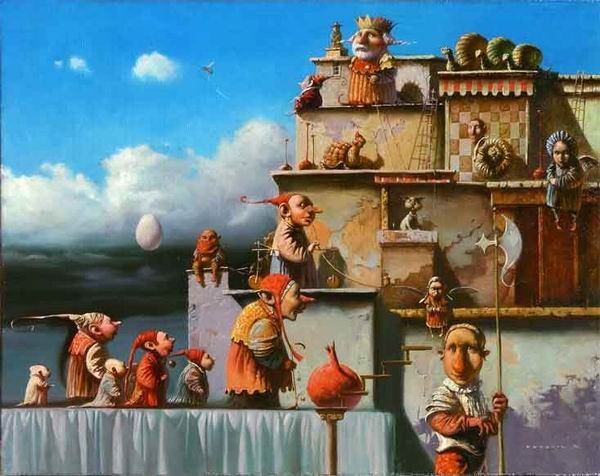Chess Tactical Vision Requires Spatial Intelligence
We need a new and radically different way of teaching chess basics
I want to challenge traditional basic education in chess. It is failing the beginner miserably. It is a boring death march after which only small numbers of them survive.
The question is how we can make chess become more fun, a rewarding, meaning-filled experience accessible to everyone.
If we know the answer, we will have a nation where chess is understood and loved more. Where a true breakthrough happens. Not only will we then have a solid base of players (and be able to form a team to take up a more serious challenge to the teams of Russia, China, or India that we compete internationally), but we will also have a population enjoying pleasures of the game more deeply (here I mean more than just wood pushing). True, not everyone should become an expert. One can still appreciate and consume art without having the ability to paint like van Gogh.
So what is in the way to move toward this noble goal? We need to get out of the Ice Age as we teach the basics right now. Chess educators and parents continue to teach chess in a off-putting way that only appeals to the most fervent. There is too much information, books are outdated, lessons overly complex.
First victim: poor chess vision
What seems to be off the radar for coaches and parents is spatial reasoning. Whether it is chess, football, tennis or any other sport with two contestants in space and time, you have to develop spatial intelligence first. If you want to really learn something, if you want to survive that death march, you need spatial intelligence, you need to learn how to think visually.[1]
Instead of how to kick it, you need to control the ball, you need to be drawing a mental map of the game you are in. You should constantly scan the field[2] to assess the position of players (where are the opponents, where are my teammates, where is the space to play into). This will enable you to make smart decisions, why, where and when to penetrate the defense by dribbling, passing or shooting the ball.
The development of spatial concepts should be the first part of the beginner’s player training. You need to pay attention to what matters most. In chess it is piece relationships on the board defined by four possible type of interactions (attack, restriction, blocking, protection). Over a period of time, these patterns of attention become invisible to you, they become automatic.
Once you learned to see the piece architecture without thinking about it, you reached the next level in your chess education, both in learning and efficiency of your chess neural pathways. Now you can build in other chess learning activities, you can study whatever it is currently typically studied in chess. You can now multitask, your spatial scanner, your chess 6th sense being active in the background. Because the most fundamental of your chess tasks is natural and automatic (you don’t even feel it a task, it is second nature now), you can free up your chess time and effort to do other things that haven’t yet been incorporated into the brain’s repertoire of cognitive patterns and automatic actions.[3]
And so you reach the next level of your progressing in chess.
And then next, and next…
With your chess visual intelligence module, well-developed and firmly secured in place, humming silently under the hood…
Without it,
It just doesn’t matter! — Bill Murray
NOTES:
1. Spatial intelligence is one of the nine intelligences on Howard Gardner’s Theory of Multiple Intelligences. It is a crucial tool in many fields, the capacity to understand the spatial relations and movements of objects; spatial thinking involves three components: concepts of space, tools of representation, and processes of reasoning;
plays a fundamental role in the learning process, whether it is math, art, chess, or literacy; it’s been woefully neglected in chess teaching in the early, critical period of learning, yet it is indispensable skill to play well.
2. Xavi, FC Barcelona’s midfield maestro, explains,
“Think quickly, look for spaces. That’s what I do: look for spaces. All day. I’m always looking. All day, all day. Here? No. There? No. People who haven’t played don’t always realize how hard that is. Space, space, space. I think, the defender’s here, play it there. I see the space and pass. That’s what I do.”
3. Now You See It: How Technology and Brain Science Will Transform Schools and Business for the 21st Century, Cathy Davidson.

